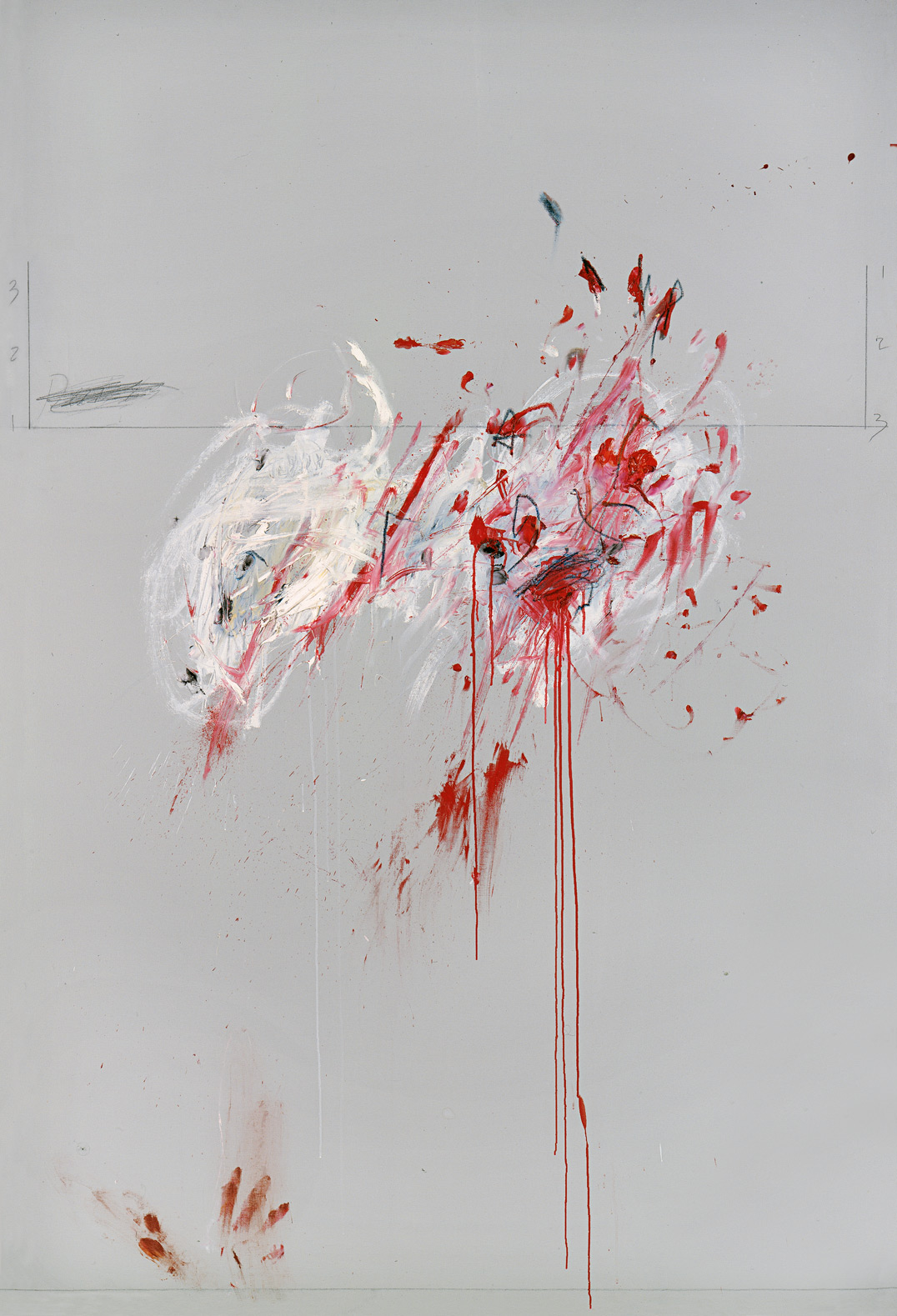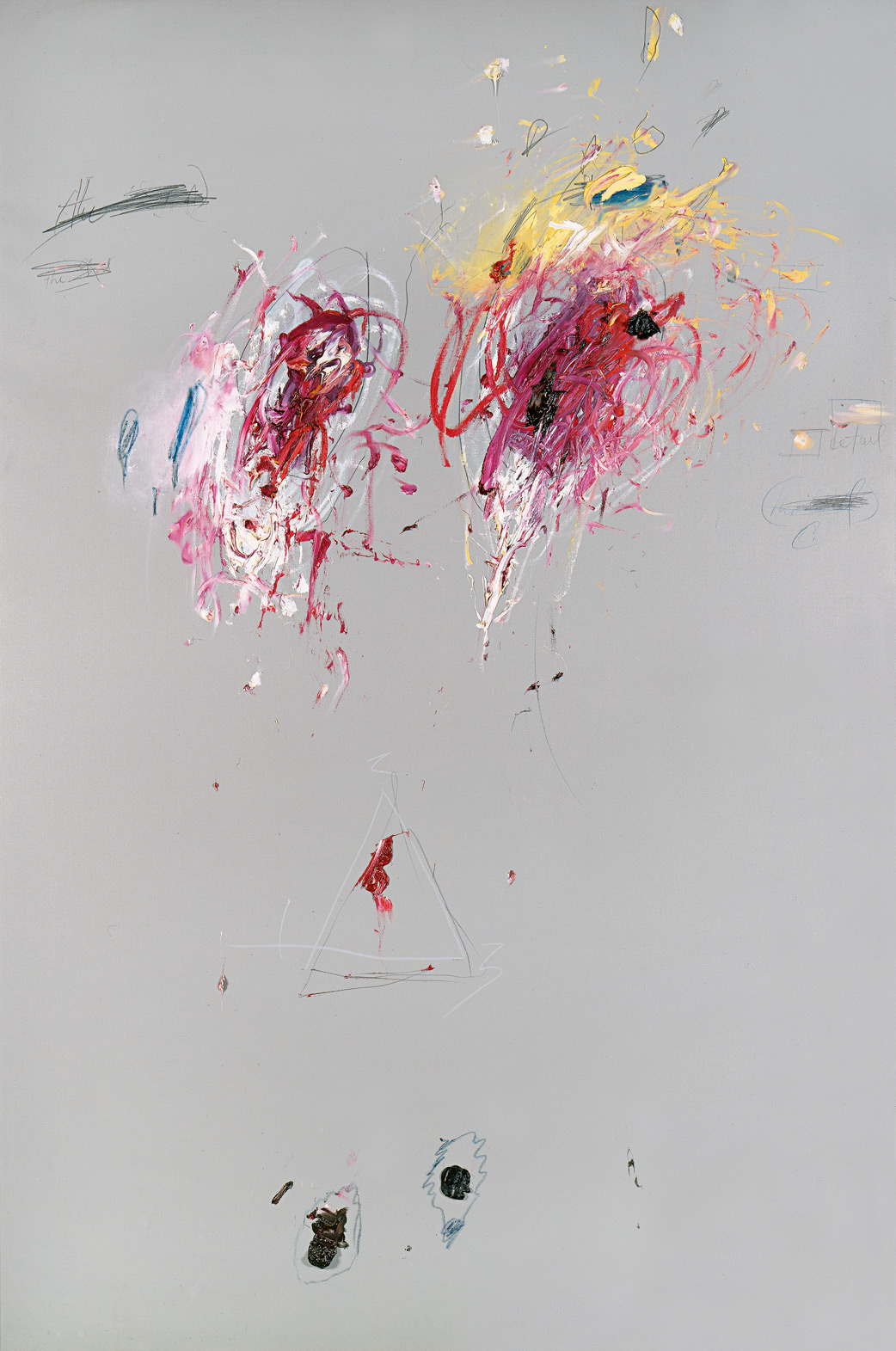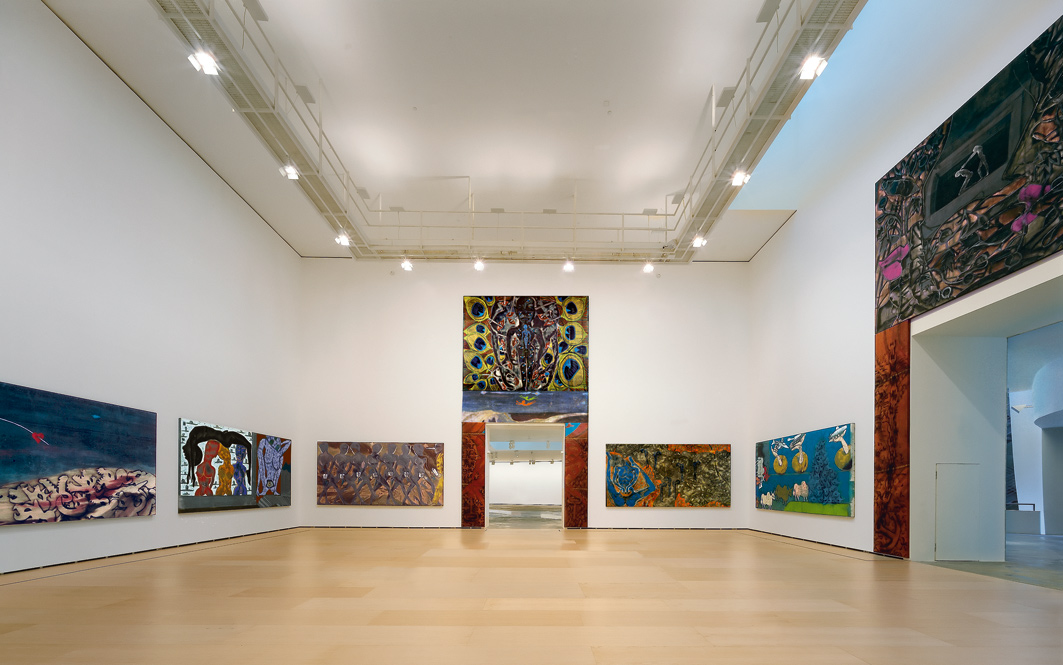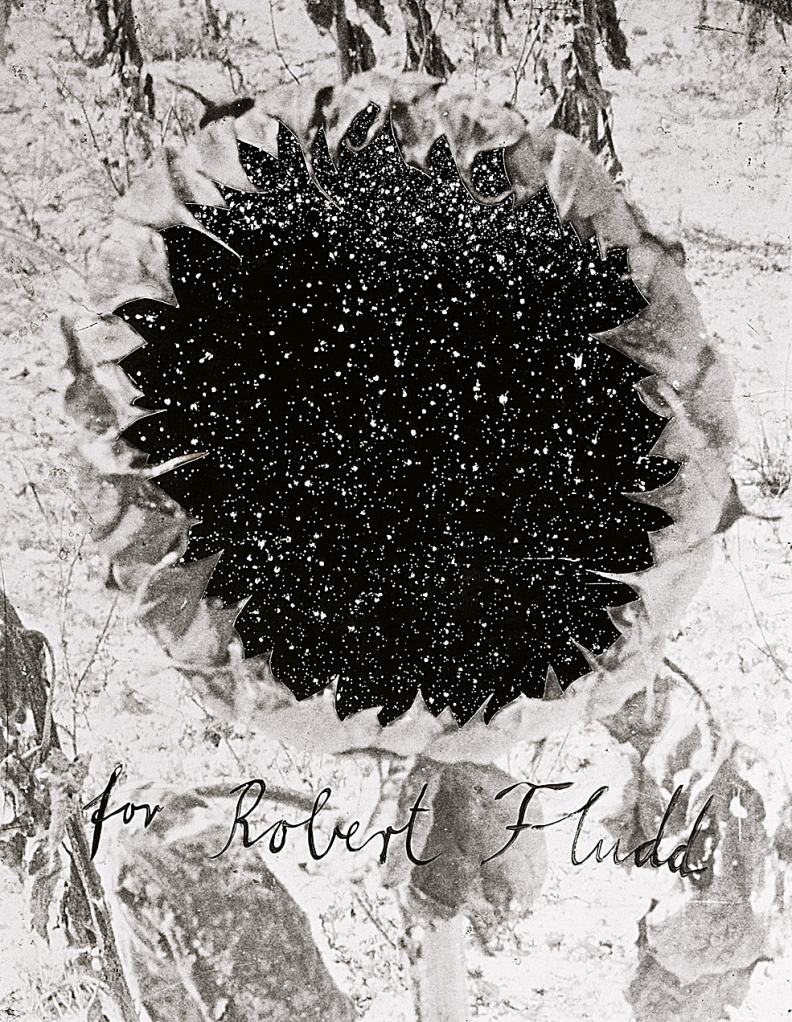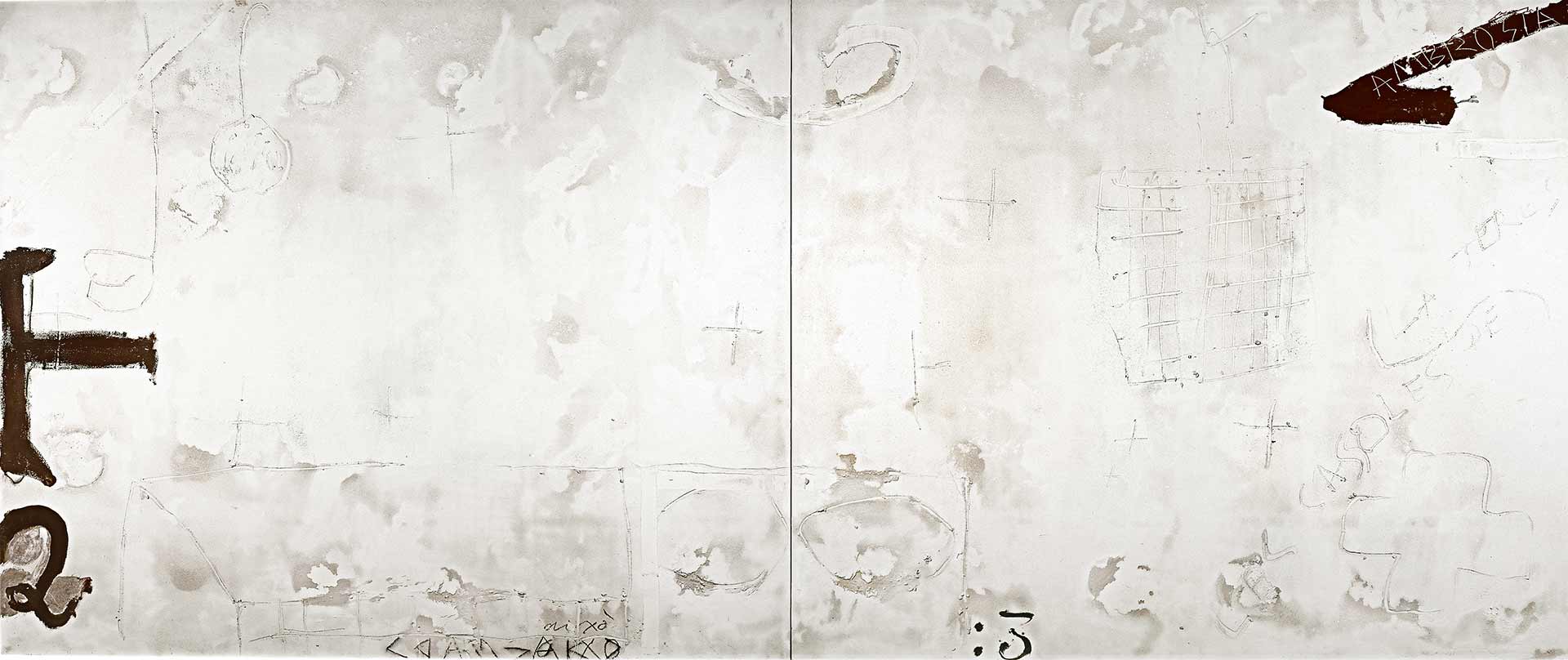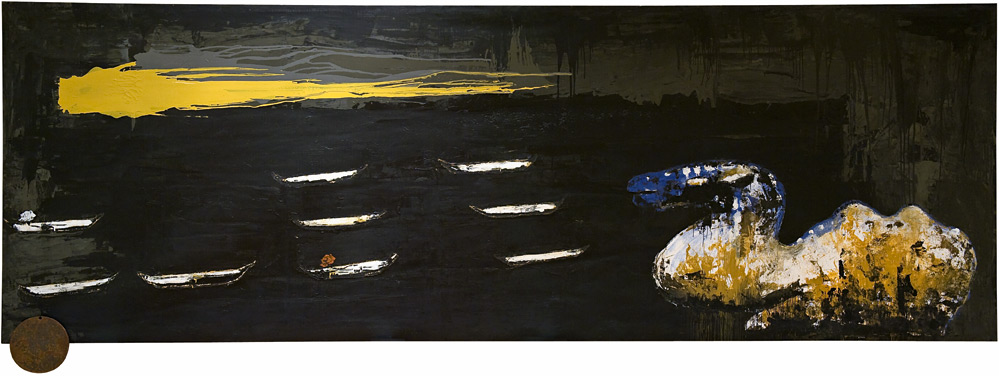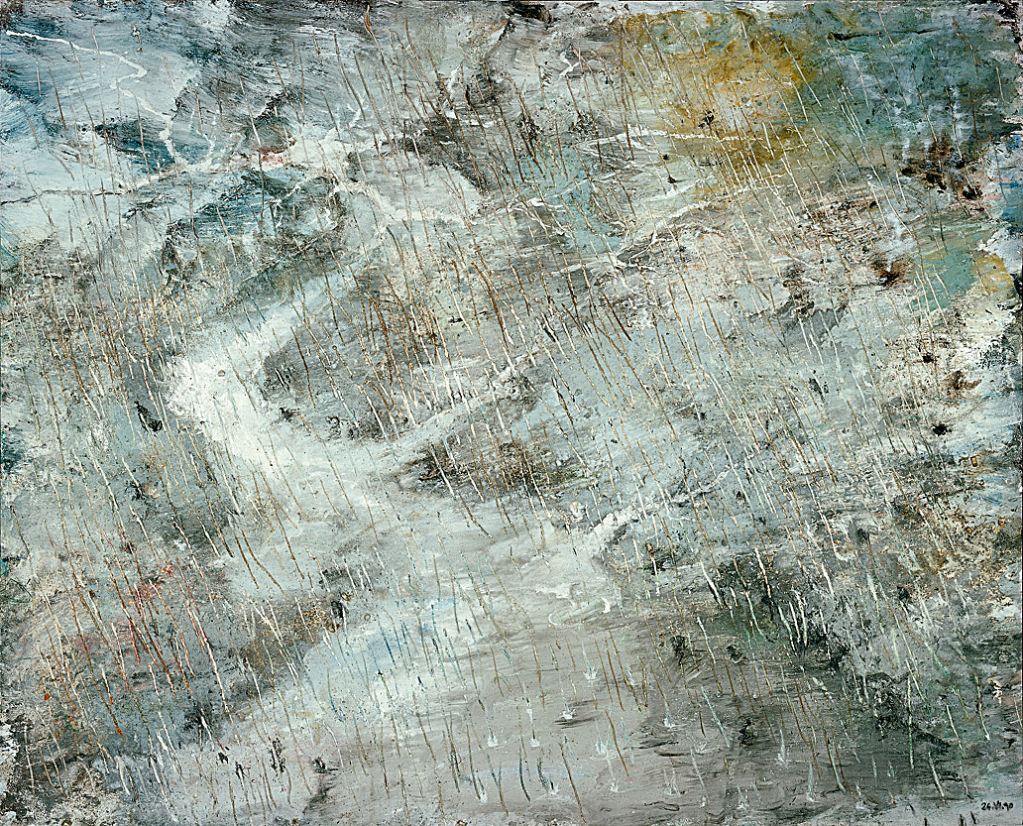Nine Discourses on Commodus
1963In the mid-1950s, while working as a cryptographer in the US Army, Cy Twombly developed his signature style of graffiti-like scratches, scribbles, and frenetic lines that simultaneously referenced and subverted the then-dominant painterly mode of Abstract Expressionism. Following Twombly's permanent move to Rome in 1957, the gestural freedom of Abstract Expressionism was counterbalanced by and tethered to the weight of history. A series of works from the late 1950s and early 1960s chart Twombly's deepening fascination with Italian history, ancient mythology, and classical literature.
During the period from 1962 to 1963 Twombly's paintings and their historical referents assumed a much more somber and anxious tone, as Twombly took up a panoply of historical assassinations as his point of departure-a shift perhaps reflective of the darkening mood of the early 1960s, which witnessed the Cuban Missile crisis and the assassination of President John F. Kennedy. Produced in the winter of 1963, the painting cycle Nine Discourses on Commodus serves as a summation of this agonized and singular phase in his career. The cycle is based on the cruelty, insanity, and eventual murder of the Roman emperor Aurelius Commodus (161–192 CE). Conflict, opposition, and tension dominate the paintings' composition. Two whorls of matter hold the central focus of each piece, ranging in mood from serene, cloudlike structures to bleeding wounds and culminating in a fiery apotheosis in the final panel. Despite the paintings' intrinsic aesthetics of chaos and instability, a tightly controlled armature governs their composition. The gray background acts as a negative space to counterbalance the bloody whirls of paint and scabs of congealed impasto. Over this neutral backdrop, the line that runs along the middle of the paintings serves as a guiding mark to subdivide the composition. Many of the Commodus paintings also feature numerical sequences, often articulating the grids, graphs, and geometric axes that form the paintings' skeleton.
The Commodus paintings were first exhibited at Leo Castelli Gallery in New York in March 1964, appearing before an American audience still in the thrall of Pop art and Minimalism. In this context, Twombly's messy and esoteric Commodus paintings seemed severely out of place and out of date. They attracted scathing reviews, which tellingly focused on Twombly's absence from the New York art scene, implying his abandonment of the United States and carrying the distinctly chauvinistic subtext that these paintings had been imported from "old Europe." Given their intrinsic reliance on narrative and sequence, it can hardly have helped the situation that the Commodus paintings were installed in a jumbled and confused order at Castelli Gallery, leaving their overall trajectory undecipherable.
After this ignominious reception, the Commodus paintings, all unsold, were returned to exile in Italy. The controversy over the works and its aftermath had far-reaching repercussions on Twombly's painting and career, reverberating in his diminished output during the following two years and perhaps acting as a catalyst for his subsequent change in direction with the "blackboard" series. It was not until the summers of 1977 and 1978, while preparations were under way for a retrospective exhibition at the Whitney Museum of American Art, that Twombly would create another historical ensemble, Fifty Days at Iliam. When the Whitney retrospective opened in 1979, it was only the second time the Commodus paintings had been exhibited.
It would take many years for the true impact of the Commodus paintings to become apparent. Today, distanced from the rivalries and debates of the 1960s, the strength of Twombly's painting is no longer obscured by such polemics. The Commodus paintings-previously seen as peripheral or aberrant by Twombly's contemporaries-now clearly occupy a unique and central position in the history of postwar painting.
Source:
Nicholas Cullinan. "Cy Twombly." In Guggenheim Museum Bilbao Collection. Bilbao: Guggenheim Museum Bilbao; Madrid: TF Editores, 2009.
Original title
Nine discourses on Commodus
Date
1963
Medium/Materials
Oil, pencil, and wax crayon on canvas
Credit line
Guggenheim Bilbao Museoa
Resources
At the Museum
Perspectives
Nine Discourses on Commodus by Cy Twombly
Chef Andoni Luis Aduriz and curator Maite Borjabad review the unsettling story underlying Cy Twombly’s cycle of abstract paintings Nine Discourses on Commodus (1963), whose somber tone reflects the darkening mood of the early 1960s, when the world witnessed the Cuban Missile Crises and the assassination of John F. Kennedy.



